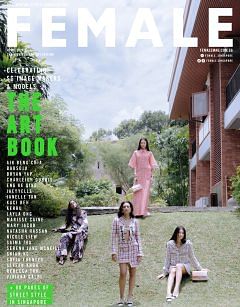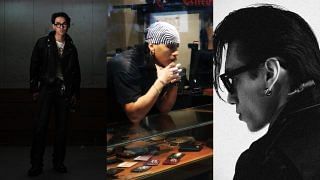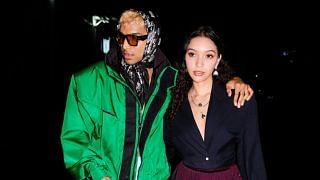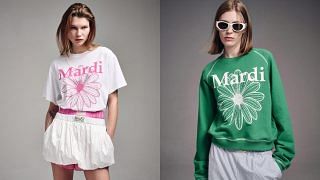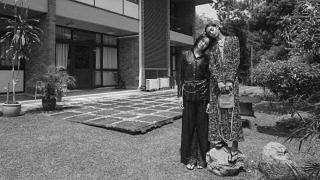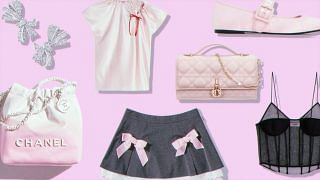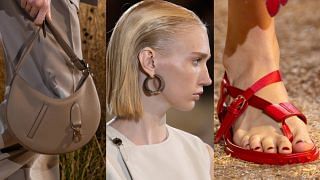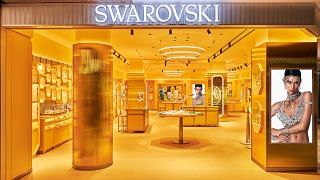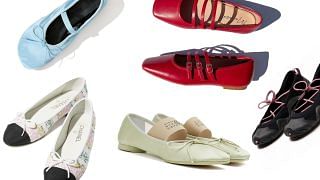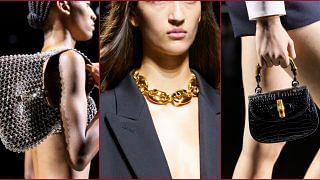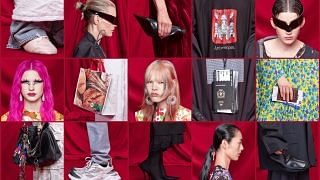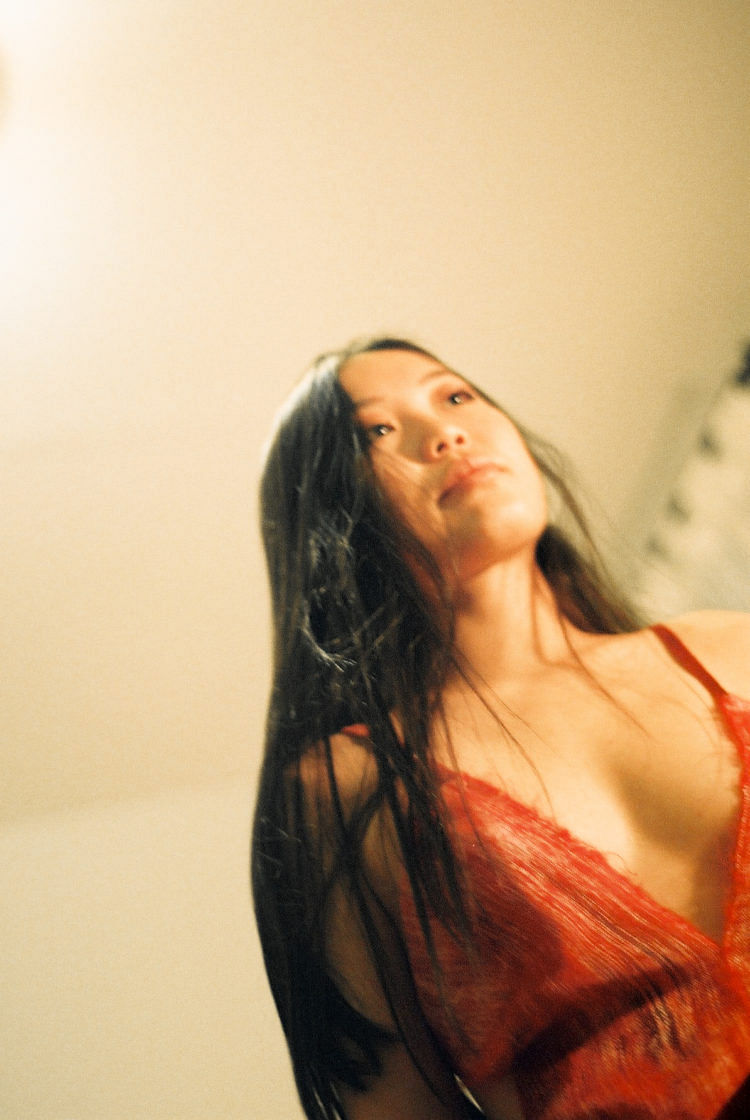
It’s 11 in the morning when I meet with knitwear designer Shawna Wu and the first thing that catches my eye is her makeup — she favours a heavy cat eye, but one that’s also liberally laced with silvery sparkles. Not exactly your everyday get-up but then again, there’s nothing about her or her work that’s quotidian.
While her nationality officially reads Taiwanese, Wu was born in Singapore and spent most of her life here, though she eventually moved to New York to study fashion design at Parsons where she’s currently based. Coming across her work on Instagram, I was intrigued; her pictures often depict a diverse range of faces and genders attired in various state of undress in her diaphanous knits (all are one-off pieces done by hand, which can take up to three weeks or more per piece), mottled with Wu’s favourite blood-red hue.
https://www.instagram.com/p/BiOG_tABrak/
https://www.instagram.com/p/BnkohvmFFlX/
The effect is tantalisingly inviting, as if one has worn a beloved garment so many times that it starts to fray — or perhaps after an intimate encounter. It’s in sync with Wu’s design philosophy, which she describes as “touchy feely, intuitive, sensitive, emotional, dreamy, dark; a primal, sensual experience – I love basic experiences and emotions [such as] love, hurt, conflict, confusion.”
Environmental sustainability is another tangent that informs her works — it’s literally woven into her designs — and while it’s clearly a trending thing now in fashion and elsewhere, the 24-year-old’s expansive answers come across as heartfelt and thoughtful, rather than cheap lip service.
“Fashion is the second most polluting industry in the world, and it can pollute not just the environment in very horrific, tangible ways, but in our growing apathy and coldness to other lives — the individuals involved in the process of creating our clothing. This (desire to be empathetic to the environment and those behind-the-scenes) becomes rooted tangibly in my collection, which focuses heavily on materiality and textile making processes that are sourced ethically, considering the social and environmental costs of every material involved,” says Wu.
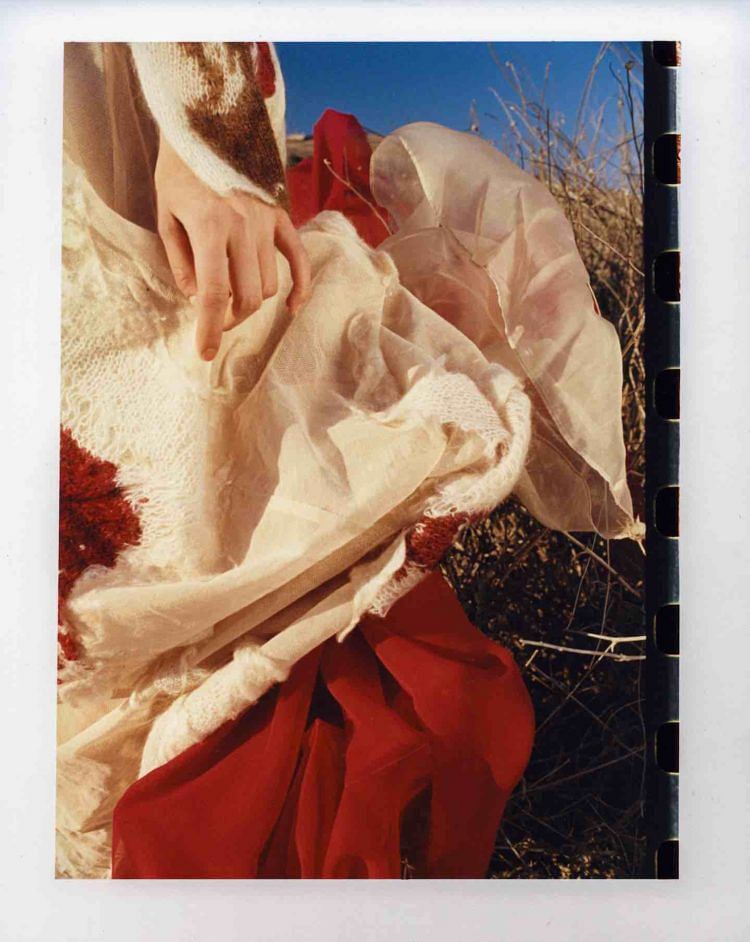
This highly considered approach has seen her invited to present a talk on sustainability and “sensuous theory” at New York Textile Month and graduating with honours from the sustainability program Parsons executed in collaboration with fashion conglomerate Kering last year. For the moment however, Wu is back in town for a live performance art show that aims to dissect cultural legacies in today’s context — presented as a re-imagining of the traditional tea ceremony.
https://www.instagram.com/p/BrSXDLGFNs7/
It’ll be staged at co-working space/dive bar 21 Moonstone this Friday night, and while certain pieces such as jewellery and silk dresses are available for sale, Wu’s knits sadly will not be, as each design is custom-made. But, you can always reach out to her via her website.
Ahead of the show, we speak to Wu on what goes behind the intense handiwork of her designs and why consumers need to re-think the way they approach their consumption of fashion.
Your parents are Taiwanese, you grew up in Singapore but now you’re based in New York. What effect has all this had on your work?
“As a child, when you feel as if you exist in multiple cultural realities, your sense of identity feels fractured when you try to place yourself, and who and where you are meant to be in this world. I think this idea of dislocated belonging developed my depth of empathy for all voices and stories that might be marginalised or unheard. The kind of affinity I feel for people who want to be able to feel whole in an alienating, structural world extends to how I view materiality, my work and the relationship people have with my work. Through sourcing, loving and dignifying bodies, we are after all dressing ourselves and one another.
When you carry yourself throughout many situations, you are asked where you are from and that in turn causes a lot of consideration because you have to choose what to present yourself as. Which part of that culture applies to you? What should you say about it? What should you tell people and what should you exclude? My work is a meditation of this.”
https://www.instagram.com/p/BhRnVzrnAN7/
Do all materials used for your knitwear come from ethical, sustainable or renewable sources?
There are two main ways of looking at sustainability: on the producer level, and on the consumer level.
“On the producer level, my brand seeks to reduce material waste and make use of socially ethical techniques in creating clothing. My hand-knit recycled silk sweater, for example, uses silk gathered from sari textile waste scraps in garment factories in Nepal and India. This is then painstakingly handspun back into yarn in women co-ops.
https://www.instagram.com/p/Bl_KUFlnkFE/
[There is] something so sweet about retrieving and recollecting something “unwanted”, and transforming it into something beautiful. These women co-ops also do so much for the women in India, employing them and enabling them to provide for themselves and their families while still fulfilling their cultural duties.
Aside from sourcing, my brand also focuses heavily on fully-fashioned handknits — meaning there is no excess material from creating the garment.The idea of nothing being “extra”; the idea of something being fully formed, as if everything that is there belongs there and is perfectly placed. I think that’s something we like to feel as well. And I think with excess consumption and wastage now, that’s a more foreign feeling than not.
I also focus on natural fibres as opposed to synthetics, and source from mills with their own ethical and sustainable codes for producing yarns. Sometimes I source from smaller stores as well that only dye with non-toxic dyes, or use artisanal techniques to create something special.”
https://www.instagram.com/p/BYuYNOgHARm/
How can consumers approach the topic of sustainability?
“In terms of reducing consumer waste, it’s more important to shift a customer’s mentality into understanding how they should love, value, cherish their garments, and spend their dollar on something that matters to them. Sometimes I hope that by sharing so much of my emotion and work, other people will begin to see what I see and love — I think it will make their lives better.”
https://www.instagram.com/p/BZsII4UHSBK/
What’s next for you?
“I’m looking to launch an online store, and am looking for potential stockists.”
Where do you hope to be stocked at?
“Dover Street Market, Radd Lounge and Chop Suey Club.”
